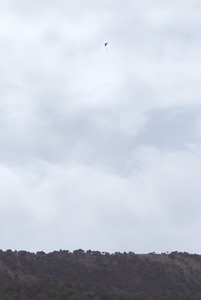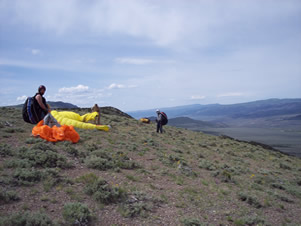
Updated 1/29/22
Site guide
Parker Ridge Launch
Recommended Winds: Parker Launch
• HG: min 6, ideal 12, Max 20, gust 5
• PG: min 2, ideal 6, max 12 gust 3
• M2: min 5, ideal 8, max 15, gust 3
• Ideal direction 245-300 degrees, Acceptable 225-315 degrees
• Min GR: 3.5
Recommended Ratings
• H2, P2, M2
Site guide and risk recommendations for Parker Ridge
Parker Ridge near Koosharem Utah - Launch: 8440ft/2573m GPS 38 24'57”N. 111 52'02” W LZ: 6781ft/2067m GPS 38 25'14.3N 111 53'58.0"W. High Clearance 2WD required. Mountain flying site. West facing launch. Thirty miles of evening soarable ridge. Excellent afternoon thermal potential.
Parker Ridge has an 1800 foot vertical drop and is located 3 miles east of Greenwich, Utah. It is a drive up site, with a long (over an hour) turnaround time. The ridge is 30 miles long and extends to Antimony. Utah.
Launching requires a west wind and can be done with P2 skills in laminar morning and evening airflows. Later morning and afternoon launches require P3/P4 skills as you have powerful thermals being produced. Late afternoon when the sun is heating up the west face is the best time to thermal on Parker Ridge
There is an 1800 foot ridge that plateau’s at the top, so being blown back does not put you in rotor conditions, but other considerations such as landing backwards should discourage launching in high winds.
The Parker launch is over short sage and there are scrub Juniper’s in the vicinity. Care should be taken to avoid these hazards
Site Features and Weather
Often in the summer there is a west morning breeze making Parker Ridge a good choice for first time mountain flights
Afternoons and evenings tend to be more thermic, but late afternoons on calm wind days almost always produce favorable thermals
Prefrontal conditions can cause strong Southwest and West winds and can blow out the site.
Known Accidents at Parker Ridge:
None
Land owner situation and insurance:
Parker Ridge launch and landing zones are on public and private land and are NOT insured or managed by the Central Utah Air Sports Association. (CUASA). The information about using Parker Ridge for launching and landing paragliders and Hang-gliders is provided as a free public service in order to help you fly safely and not upset the land owners and cause permission to use this site to be revoked. If you fly here you do so at your own risk and judgement. Just remember that everything you do reflects and effects all of us in the sport of free flight. If you would like advice on safely using the Parker Ridge site you may contact stacy@cuasa.com - jef@cuasa.com jonathan@cuasa.com
Parker Ridge site cautions:
1) P2 skills for morning and evening laminar winds
2) P3+ skills needed for afternoon and thermic conditions launches
3) P4 and very advanced skills are required to attempt top landing,
4) Helmets are recommended and should be worn any time you are attached to the glider
5) Spectators should remain 50 feet away from laid out paragliders, and be aware of launching and flying pilots.
6) Mini wings may use the Parker Ridge launch, but extreme caution is required as established landing zones may be out of range for mini wings.
7) Airflow should be within 25 degrees of straight west for P2 launches, and 45 degrees for P3/P4 launches.
8) There are power lines that run parallel to the ridge in the optional landing zone. Stay well clear of the power lines. If you have any doubts about being able to clear the power lines, land short, there are good landing areas on the East side of the power lines and clearing a few sage brush out of your lines is better than the power company retrieving your charred body from 345KV wires.
9) There are no rotor zones behind the ridge, but avoid high wind launches because wind strength can increase very quickly with altitude along the Parker Ridge.
10) Be aware of Virga or clouds dropping out in any of the mountain ranges surrounding. Parker Ridge is a mountain launch and respect should be given to the power of the mountains. Storms can come up very quickly and be very violent within a short time.
12) The valley floor nearby is a strong thermal producer and caution should be taken when landing midday or in thermic conditions.
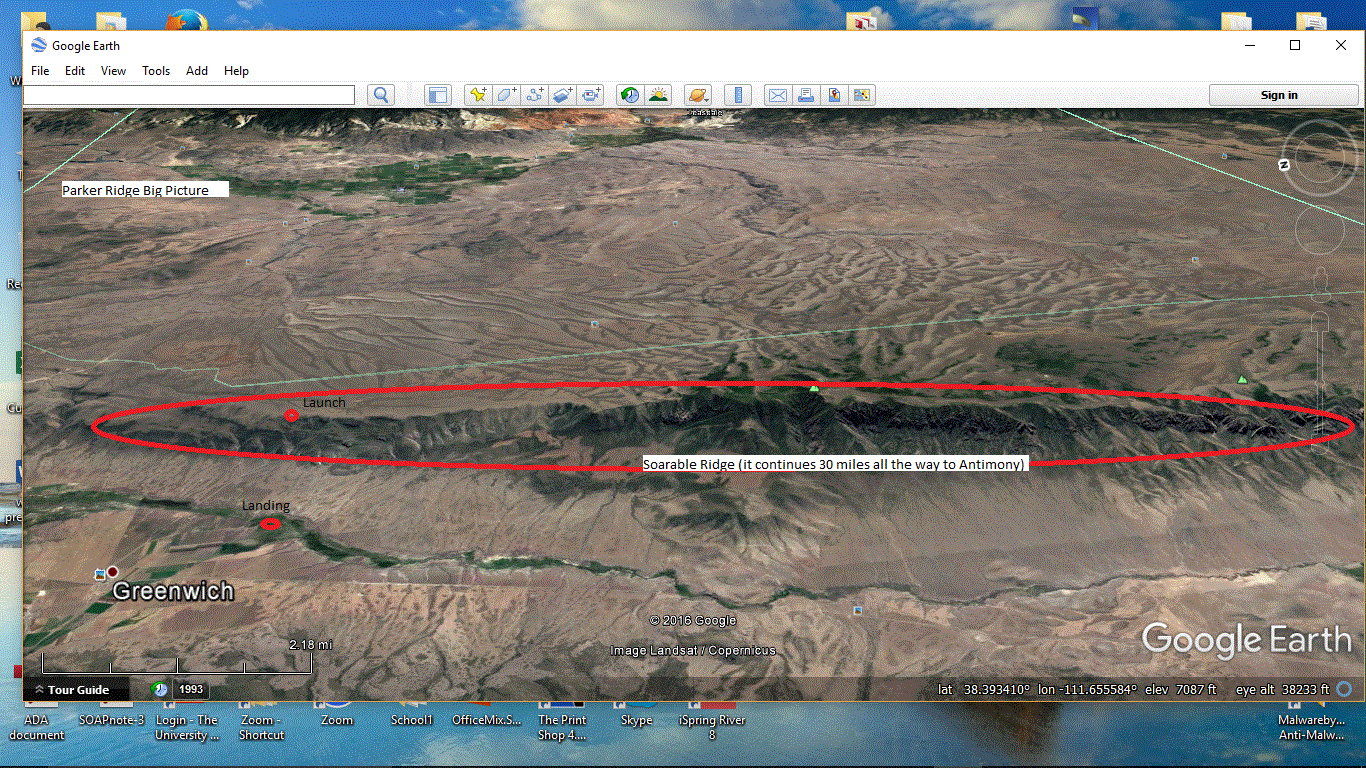
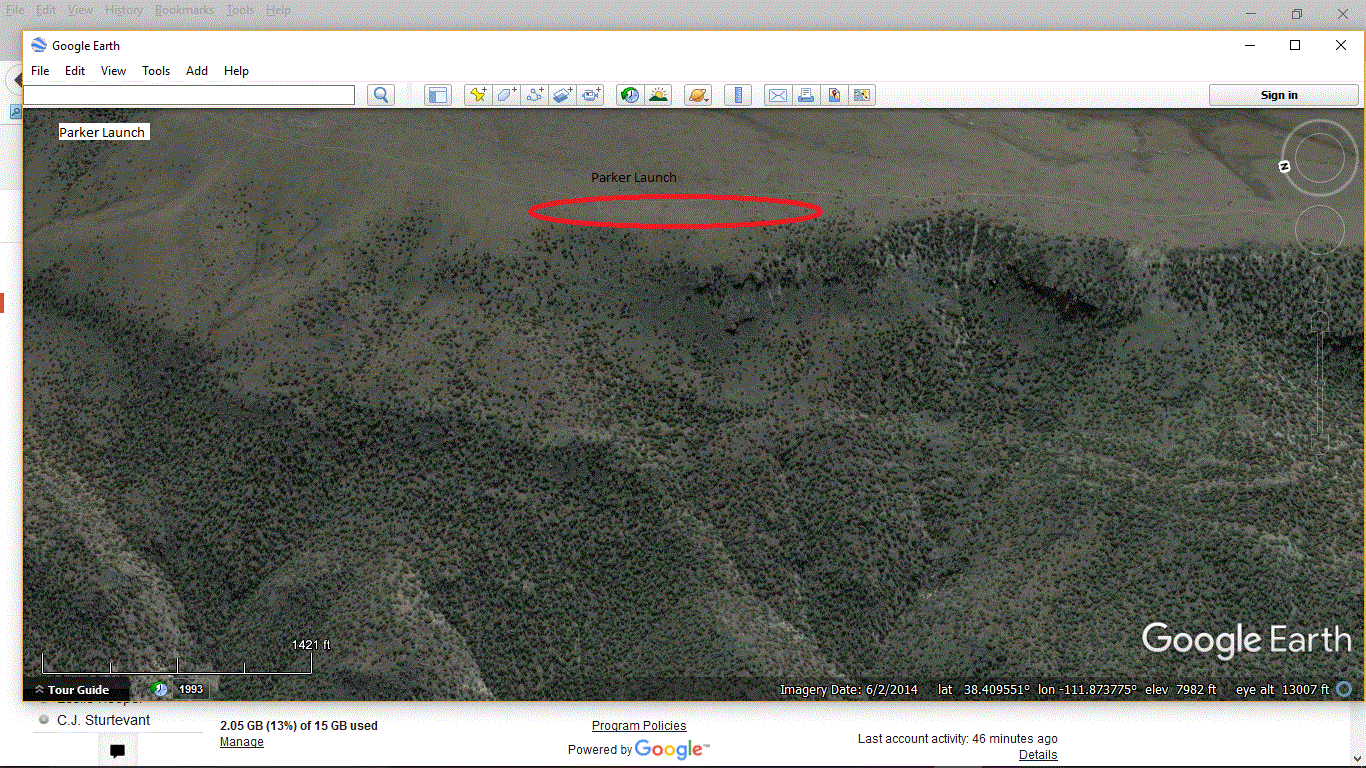
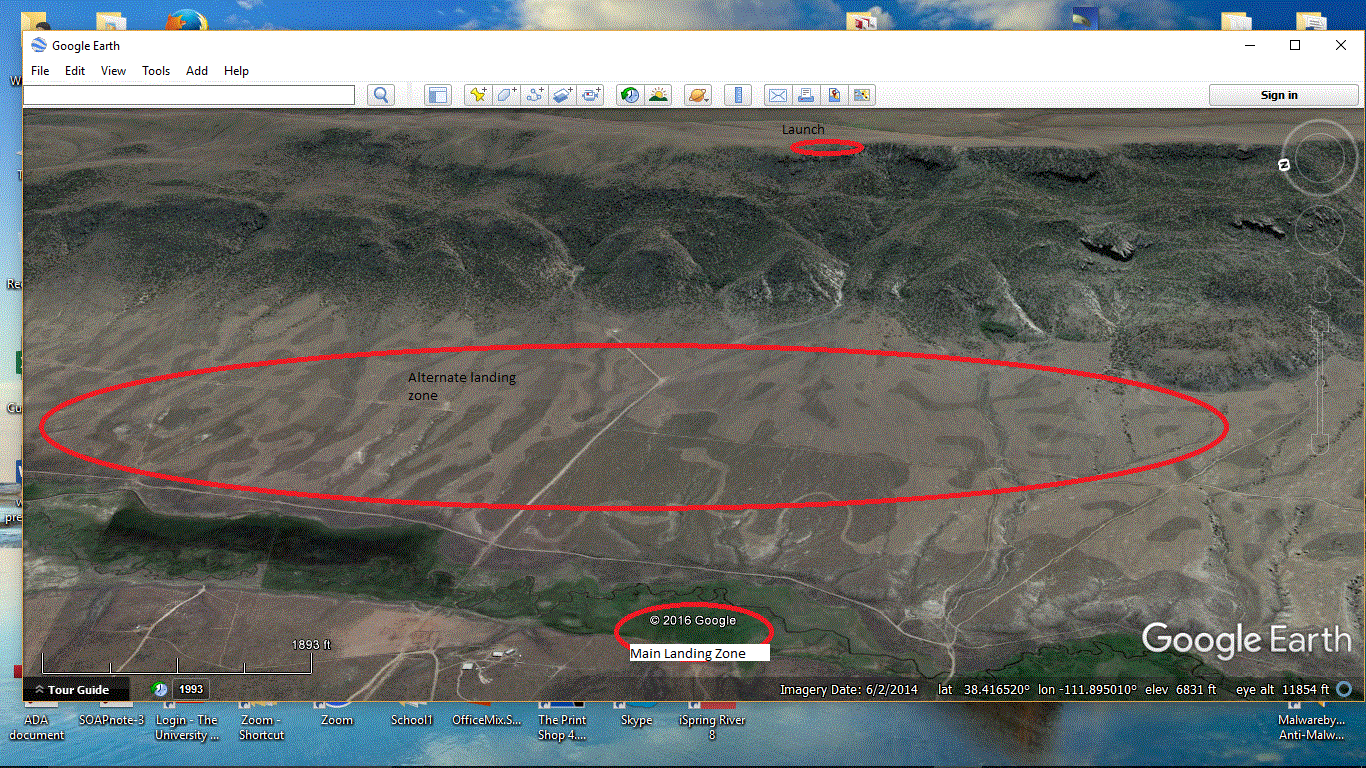
A few pictures taken at Parker. First is Doug in harness being assisted by Stacy - instructor. Second is Bob in flight.
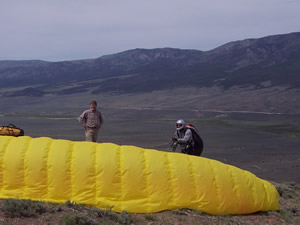
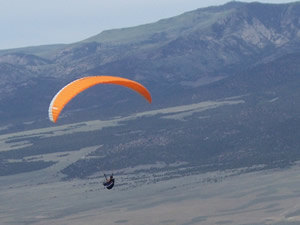
This is altitude gained from ridge lift. No thermals popping today. Go Stacy.
